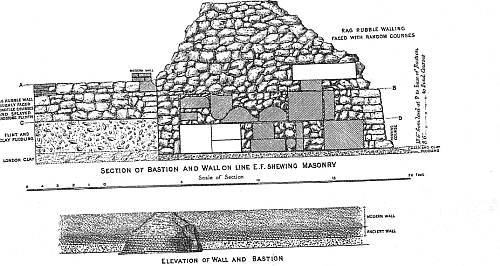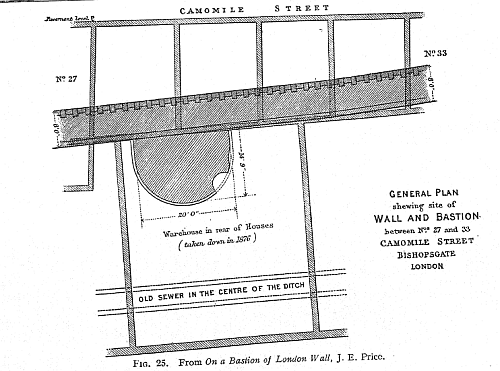

Search london history from Roman times to modern day
Roman London - the London wall
These pages are based on a "Royal Commission On Historical Monuments 1834" - actually it is 1928; which is in the public domain.
(17) . Camomile Street, middle. In 1876 a stretch of the wall 70 feet long was
uncovered and is described by J. E. Price in connection with the bastion. It was
8 feet thick and was destroyed above the plinth [J. E. Price, On a Bastion of
London Wall, 1880].
In Woodward's Letter to Wren mention is made of the destruction of part of the
wall near Bishopsgate. It is described as standing 10 feet high, with a
thickness of 9 feet, and foundations 8 feet below the surface. The wall was
built of courses of stone with double courses of bricks at 2 foot intervals.

Section of Bastion and Wall Camomile street 1876

Plan of Wall and Bastion between 27 and 33 Camomile street 1876
Trying to avoid privacy and cookie settings overwriting content